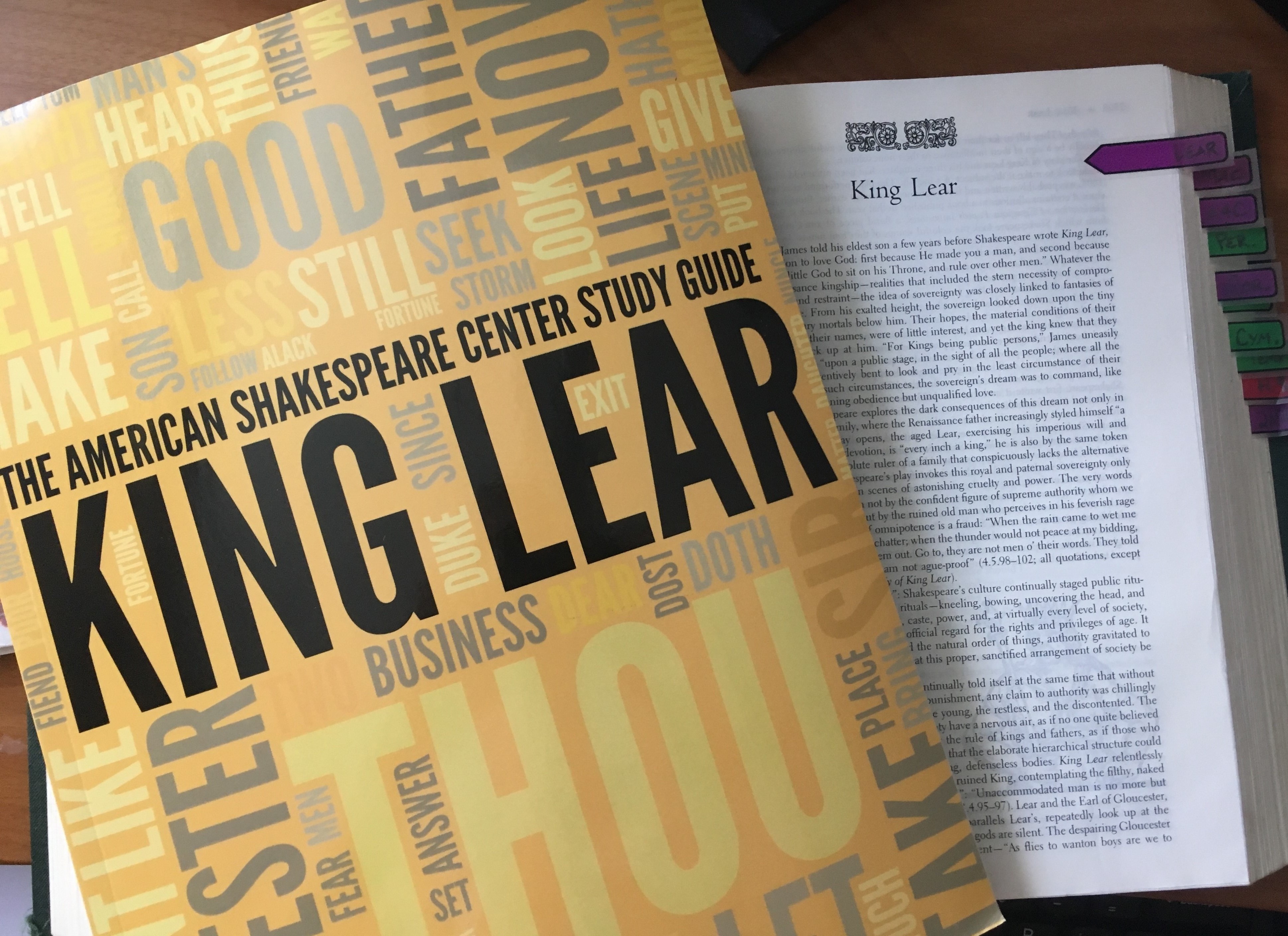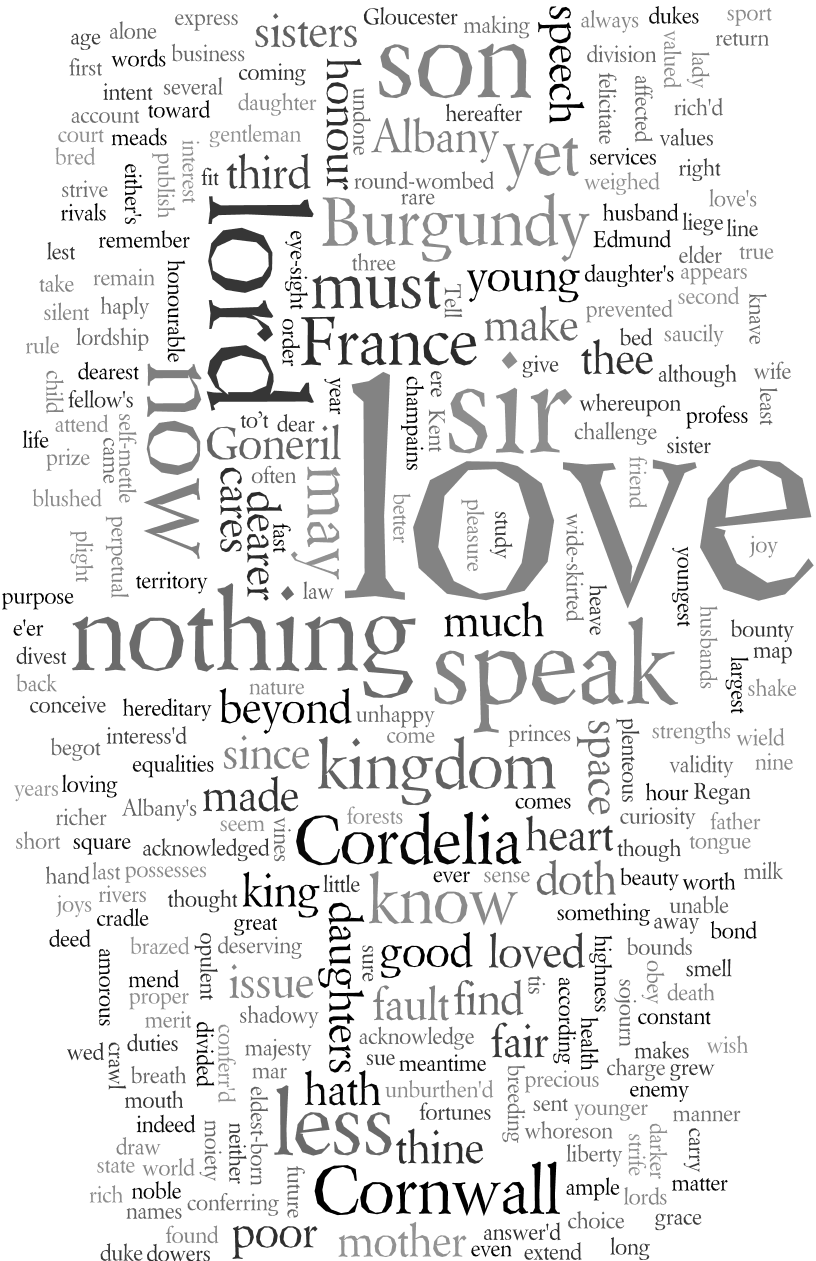This fall sees the release of a brand-new ASC Study Guide: King Lear. With this addition, we now have guides for twenty-one of Shakespeare’s plays, including all the major tragedies. I enjoy this play a lot, but it hasn’t been performed at the ASC since I started working here back in 2010, so this was my first opportunity to dive into it for ASC Education — and, boy howdy, did I dive.
Weighing in at 273 pages, this is the longest Study Guide I’ve yet written. Admittedly, some of that is because I’ve provided quite a bit of text for comparative study — quarto scenes versus Folio scenes, scenes in Lear compared to scenes in other plays — but a lot of it is because I keep expanding on what I want to include. Every Study Guide now includes a Textual Variants section, which they haven’t always. Every guide now has information on cue scripts. Every guide going forward will have special, play-specific sections on both metrics and rhetoric. Lear also has fascinating stagecraft and dramaturgical angles to explore, so putting all the pieces together gives us a Study Guide with quite a bit of heft.
As always, the Basics sections provide a toolkit for examining text, with an eye towards performance and the questions that actors ask when putting up a play, using the first 100 lines as an example. As I’ve discussed before, the first 100 lines always teach me something interesting: I love looking at what Shakespeare chooses to reveal or conceal right from the start. In Lear, although he begins with the subplot, introducing Gloucester and Edmund before Lear and his daughters, he still gets right to the action quite quickly: the story progresses all the way to Cordelia’s explanation of her failure to flatter her father. What really floored me, though, was the word cloud:

I would never have guessed that “love” would be the most-frequently-used word in the first 100 lines of Lear, but there it is — and by quite a substantial margin.
The play-specific activities mine the breadth of the fascinating themes and the intriguing stagecraft of King Lear. We begin by looking at the quarto and folio variations, since Lear is a play with a tumultuous print history. Our Staging Challenges sections focus on some of the most exciting things that can happen on stage: storms and combat. The storm in Lear is particularly interesting to examine since it goes on for most of an entire act. Language work continues in the Metrical and Rhetoric sections, where we examine verse-prose shifts and the linguistic patterns of madness. In our Perspectives sections, we connect Shakespeare’s world, the world of the play, and your students’ modern world by looking at family dynamics and the role of the fool. Finally, our Dramaturg’s Corner explores Shakespeare’s sources for Lear and the adaptations of the play that have occurred since his lifetime.
Intrigued? Here’s a sample activity for your perusing pleasure: Metrical Exploration.
 But King Lear isn’t all that’s new in the world of ASC Study Guides. The Merchant of Venice, The Two Gentlemen of Verona, and Romeo and Juliet have all received polishings this year. Of those, I’m most excited about the additions to the Romeo and Juliet Study Guide. A new Staging Challenges activity explores Juliet’s not-really-a-balcony, and a new Perspectives section applies Elizabethan and modern viewpoints on courtship, marriage, and familial interactions to Romeo, Juliet, and the Capulets. Romeo and Juliet has long been one of my favorite plays, and getting to return to it and develop a few new activities was such a delight.
But King Lear isn’t all that’s new in the world of ASC Study Guides. The Merchant of Venice, The Two Gentlemen of Verona, and Romeo and Juliet have all received polishings this year. Of those, I’m most excited about the additions to the Romeo and Juliet Study Guide. A new Staging Challenges activity explores Juliet’s not-really-a-balcony, and a new Perspectives section applies Elizabethan and modern viewpoints on courtship, marriage, and familial interactions to Romeo, Juliet, and the Capulets. Romeo and Juliet has long been one of my favorite plays, and getting to return to it and develop a few new activities was such a delight.
If you want to dive deeper into the activities of King Lear, join us for the Teacher Seminar on October 7-8. Registration for the Winter Seminar on The Merchant of Venice and the Spring Seminar on Romeo and Juliet will be opening later this fall.
All ASC Study Guides are available as PDF downloads or print-on-demand hard copies from Lulu.com.


